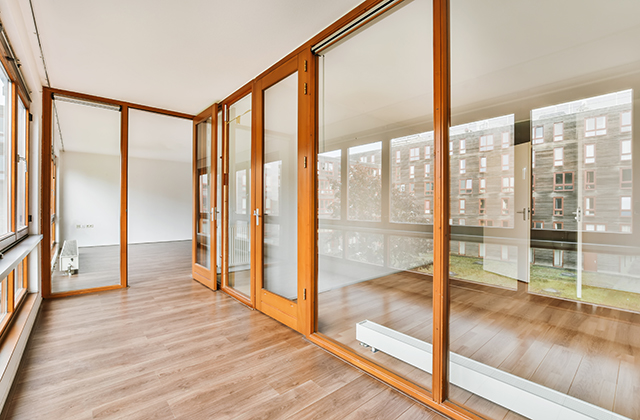
In the world of architectural design and interior decor, glass has emerged as a versatile and captivating material. Its ability to create an open, luminous atmosphere while maintaining privacy and aesthetic appeal has made it a go-to choice for many designers. Among the various types of glass available, reeded glass has gained significant attention for its unique beauty and practicality. This article delves into the world of reeded glass, shedding light on its history, applications, and the reasons behind its growing popularity.
The Origins of Reeded Glass
Reeded glass, also known as fluted or ribbed glass, has a rich history dating back to the early 19th century. It was initially used in traditional architecture to add a touch of elegance and obscurity to windows and doors. The texture of reeded glass is created by pressing molten glass between two rollers, leaving behind a series of parallel, vertical ridges. This design not only adds visual interest but also diffuses light in a remarkable way, creating a soft, dappled effect.
Applications in Modern Design
Reeded glass has transcended its historical roots and found a place in modern design across a range of applications. Its ability to balance transparency and privacy makes it an excellent choice for a variety of settings:
1. Interior Partitions and Doors
Reeded glass is often used in interior spaces to create separation between rooms or to allow natural light to filter through without compromising privacy. Its ability to diffuse light while offering a subtle visual barrier makes it ideal for contemporary homes and office environments.
2. Cabinet Doors
In kitchen and bathroom design, reeded glass cabinet doors provide an opportunity to display dishes, glassware, or decorative items, adding an elegant touch to these spaces.
3. Shower Enclosures
Reeded glass shower enclosures offer both style and privacy, making them an attractive choice for modern bathrooms. They diffuse light, creating a spa-like atmosphere and maintaining an element of privacy.
4. Lighting Fixtures
The unique texture of reeded glass is also embraced in lighting design. Pendant lights and chandeliers with reeded glass shades cast captivating patterns of light and shadow, enhancing the ambiance of any room.
5. Exterior Windows and Doors
Reeded glass is not limited to interiors. It is increasingly used in exterior applications to combine aesthetics with functionality. It can be employed in entry doors, sidelights, and windows to create a welcoming, well-lit entryway while safeguarding the privacy of the home’s occupants.
The Growing Popularity
The appeal of reeded glass is not only due to its aesthetics but also its adaptability. It works well in various architectural styles, from classic to modern, and can be incorporated in both residential and commercial spaces. Its ability to let in light while maintaining privacy is especially relevant in urban environments where proximity to neighbors is common.
Additionally, as sustainability becomes a paramount concern, reeded glass can be used in energy-efficient designs. It aids in diffusing natural light throughout a space, reducing the need for artificial lighting and, consequently, energy consumption.
Conclusion
Reeded glass, with its historical charm and contemporary versatility, has become a rising star in the world of architectural design. Whether used in interior partitions, cabinet doors, or exterior windows, it offers a unique blend of transparency and privacy that captivates both designers and homeowners. Its ability to diffuse light and create captivating visual effects only adds to its appeal. As we continue to seek innovative ways to marry aesthetics and practicality, reeded glass emerges as a shining example of how historical craftsmanship can meet modern demands. It truly allows us to look through the glass, in more ways than one, and appreciate the elegance it brings to our spaces. In my home I always prefer to use custom cut glass for many options on where you gonna use it.
